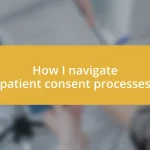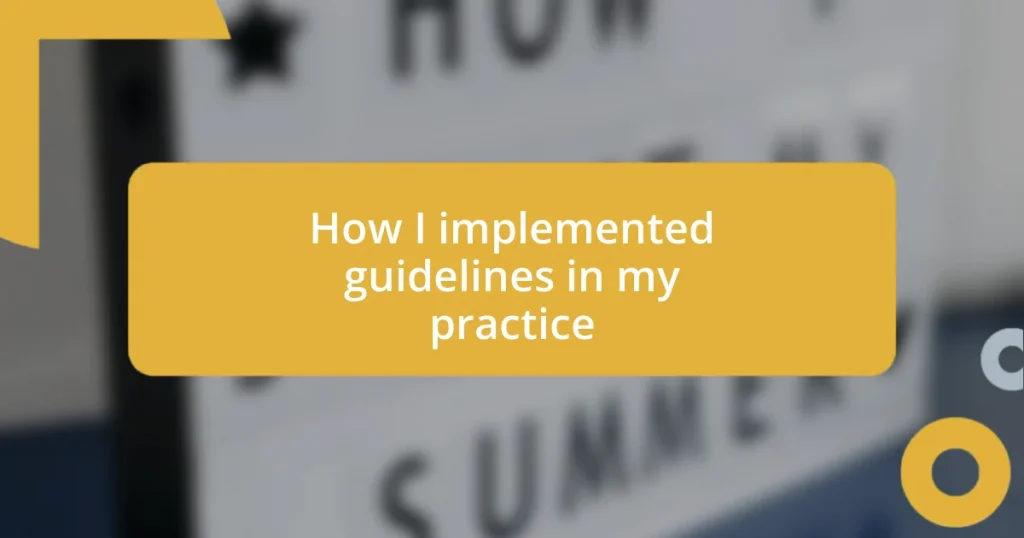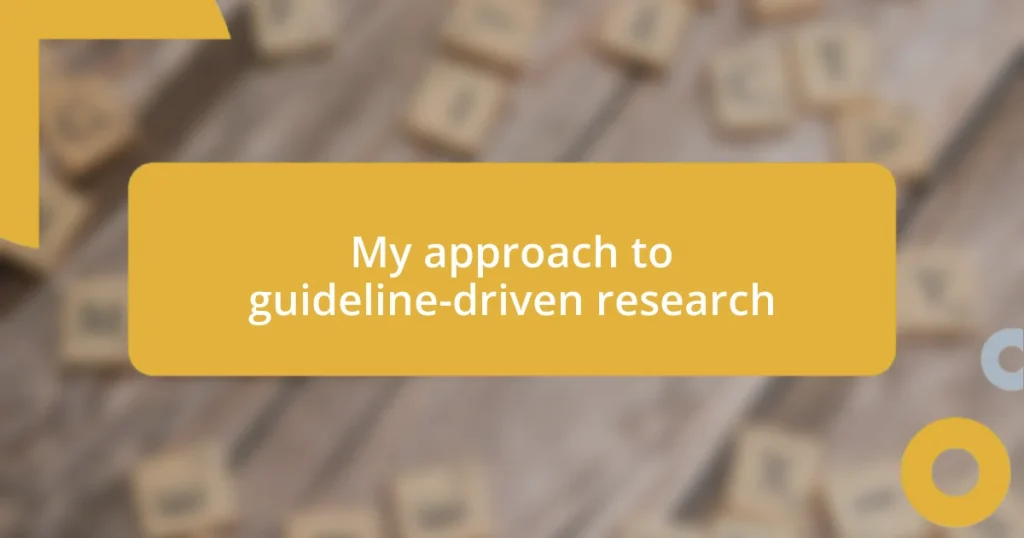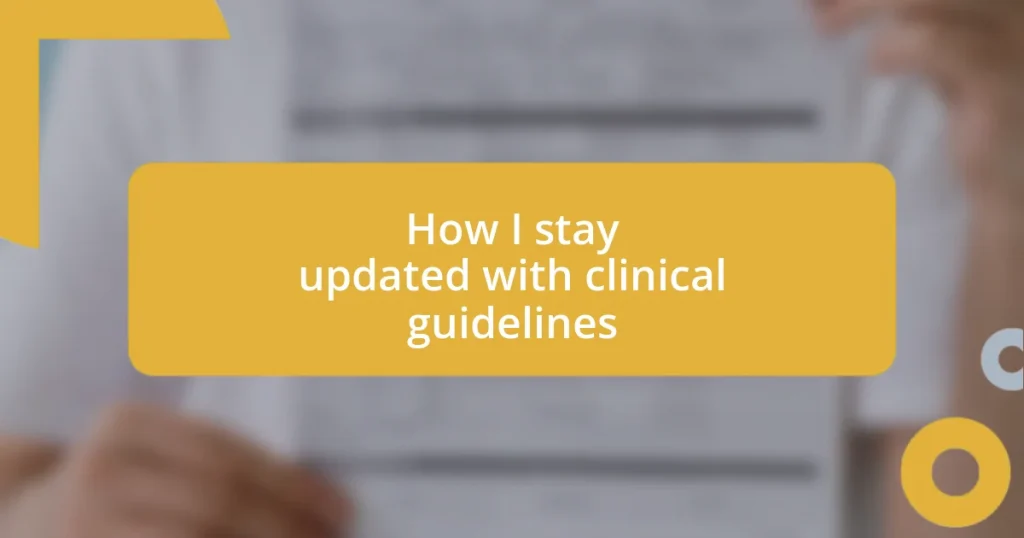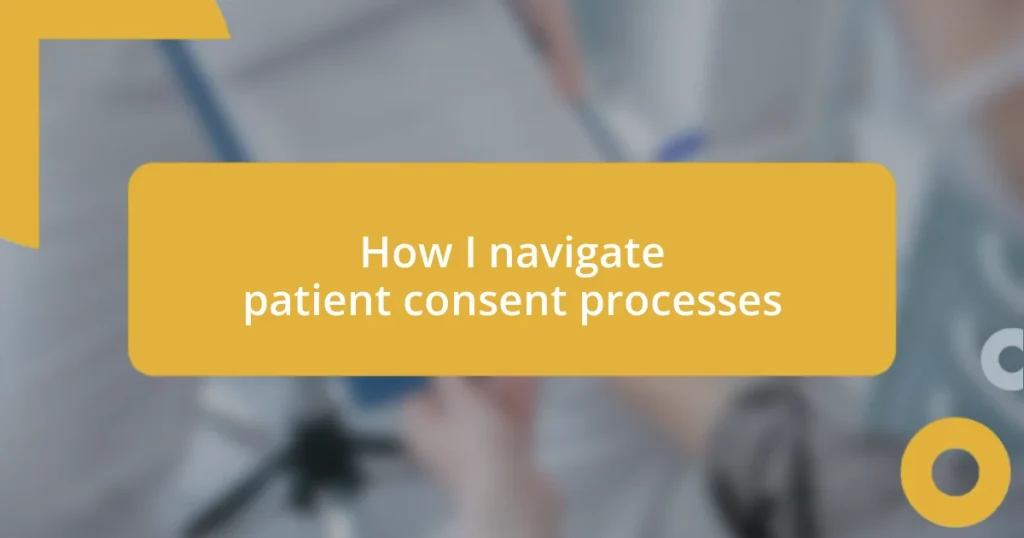Key takeaways:
- Guidelines create a framework for consistency and quality, fostering a culture of trust and accountability within teams.
- Identifying and implementing relevant guidelines requires evaluating sources, reflecting on applicability, and engaging with peers for recommendations.
- Continuous monitoring, feedback collection, and adjustments based on team insights are essential for effective implementation and improvement of practices.
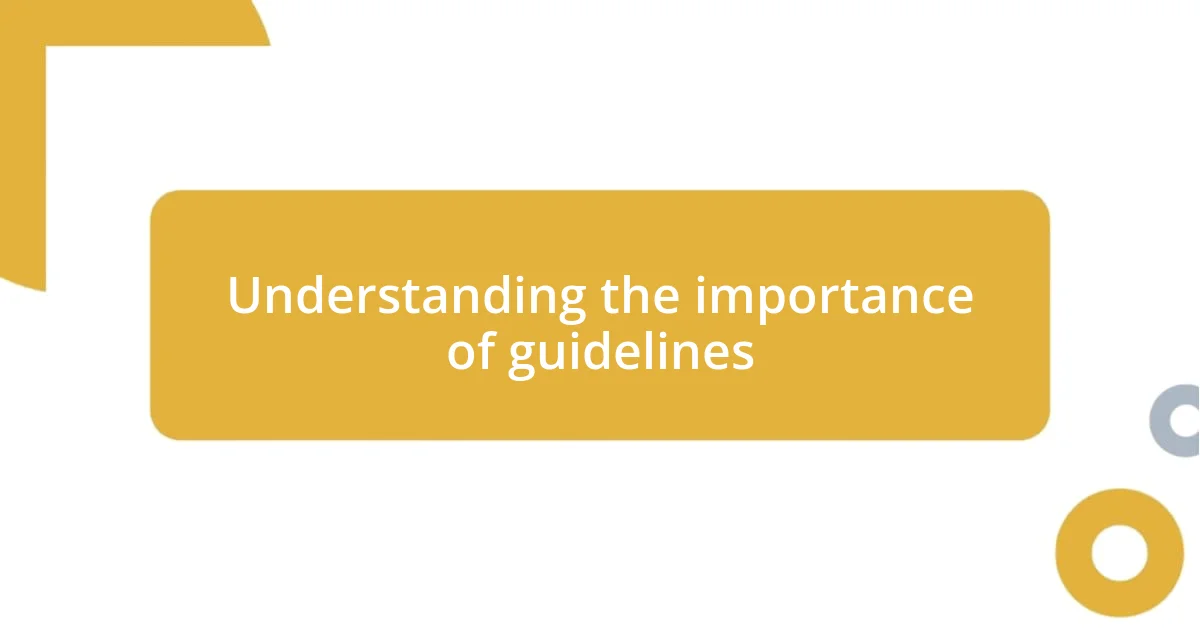
Understanding the importance of guidelines
Guidelines are more than just rules; they’re frameworks that shape our practice and ensure consistency. I remember when I first faced a challenging situation without clear guidance—I felt lost and overwhelmed. That experience made me realize how crucial established guidelines are for decision-making and maintaining quality in my work.
When I implemented new guidelines, I noticed immediate changes in my practice. For instance, a specific set of protocols for patient care not only streamlined processes but also boosted team morale. Have you ever felt the relief that comes from knowing exactly what steps to take in a tricky situation? I certainly did, and it reinforced my belief that guidelines foster a sense of security and direction.
Ultimately, understanding the importance of guidelines goes beyond compliance; it’s about creating a culture of trust and accountability. Seeing my colleagues confidently apply these standards reassured me that we were all on the same page, working towards a common goal. Isn’t it empowering to know that we have a shared blueprint guiding our efforts?
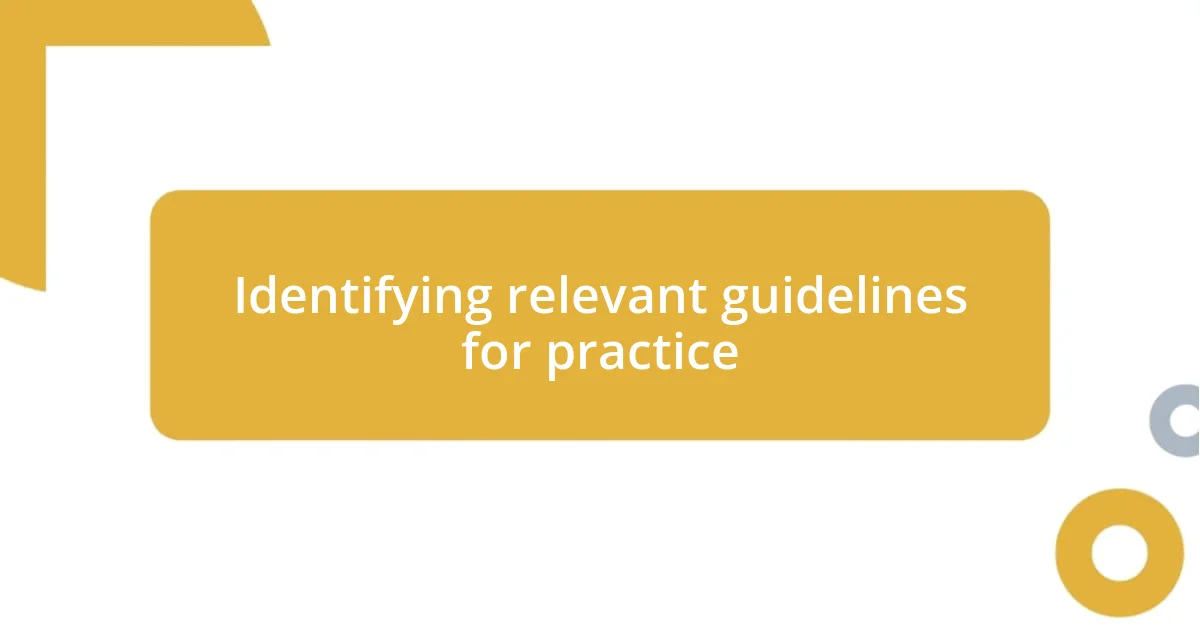
Identifying relevant guidelines for practice
Identifying relevant guidelines for practice can feel like searching for a needle in a haystack, especially when there are countless sources to sift through. From my past experiences, I’ve learned the importance of aligning the guidelines with my specific area of work. When I first delved into this process, I found it helpful to focus on those guidelines that directly relate to my field, which significantly eased my decision-making.
To effectively identify relevant guidelines, I follow these steps:
– Evaluate the source: Ensure that the guidelines come from reputable organizations or experts in the field.
– Consider applicability: Reflect on how these guidelines can apply to your unique circumstances.
– Seek peer recommendations: Sometimes, discussing with colleagues can unearth hidden gems.
– Stay updated: Regularly go through journals and newsletters for the latest updates in guidelines.
– Participate in professional groups: Networking can often lead to discovering valuable, guidance-specific resources.
Each time I implement these strategies, I find myself more grounded and equipped to apply the guidelines effectively with confidence.
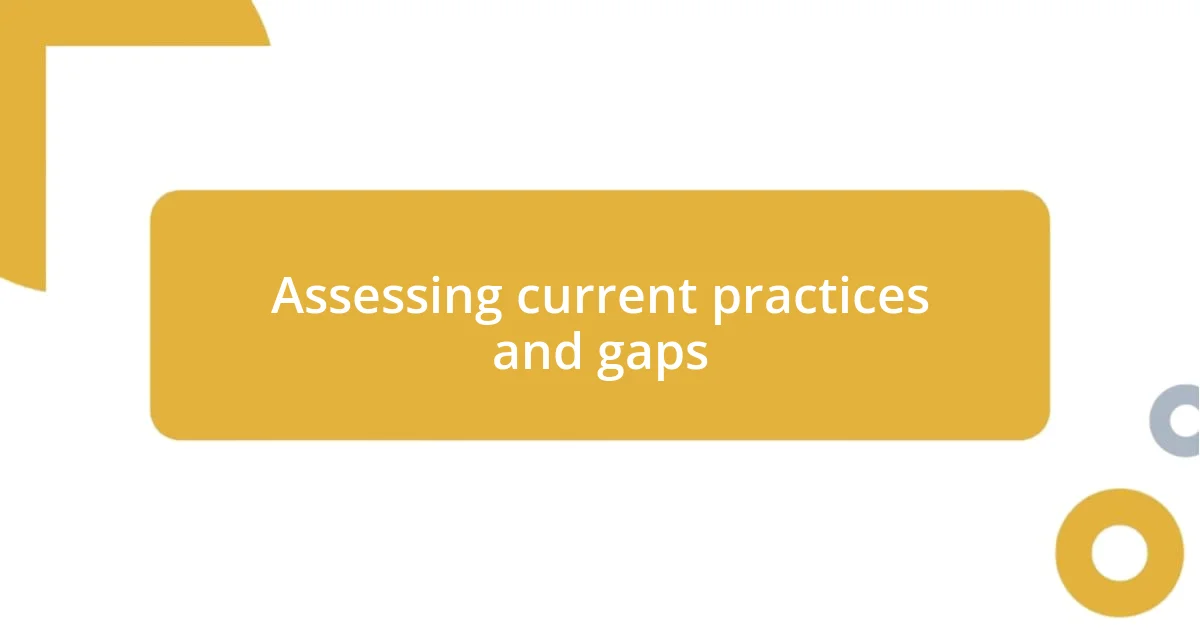
Assessing current practices and gaps
Assessing current practices and identifying gaps can feel overwhelming at times, but it’s a necessary step for improvement. I remember the initial phase of my assessment; I was both anxious and hopeful. I gathered feedback from my colleagues and conducted a thorough review of our existing processes. This phase revealed areas where we were excelling, but it also illuminated significant gaps where we fell short, particularly in communication and consistency. Have you ever discovered something about your practice that you wished you’d noticed sooner? It can be eye-opening.
As I delved deeper, I began to categorize the gaps into tangible problems – some were subtle and related to workflow inefficiencies, while others were more pronounced and impacted patient outcomes. This classification helped me see patterns in our operations. For instance, I noticed that while our clinical protocols were robust, there was often a lack of adherence to documentation standards. This inconsistency created risks I had not acknowledged before. Once I recognized these issues, it became clear how vital it was to create targeted strategies to bridge those gaps.
The process of assessment also triggered a wave of motivation within the team. It was invigorating to engage in discussions that didn’t shy away from our shortcomings, but rather focused on collaborative solutions. By fostering an environment where everyone felt safe to speak up, I watched as practical ideas emerged from every corner. This aspect of the assessment process was freeing; it transformed a daunting task into a collective mission. How do you feel about admitting gaps in practice? For me, it sparked an exciting journey towards continuous improvement and shared responsibility.
| Area of Assessment | Current Practices |
|---|---|
| Documentation Standards | Inconsistent adherence among staff |
| Communication Workflow | Occasional misunderstandings between teams |
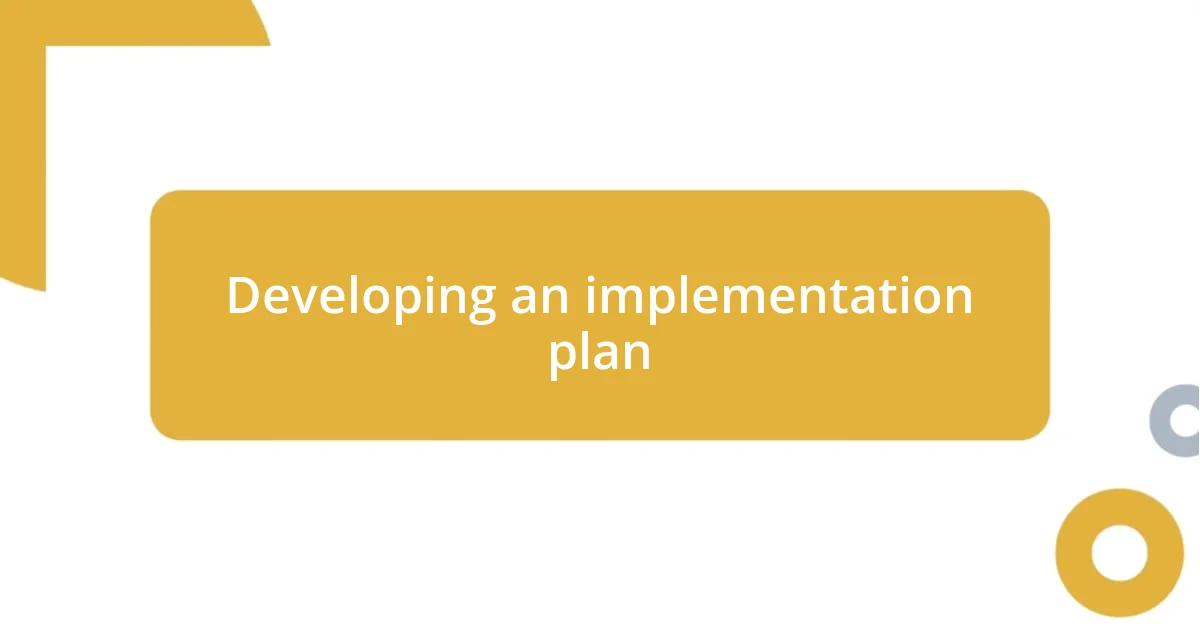
Developing an implementation plan
Developing an implementation plan requires a clear vision that translates guidelines into actionable steps. I remember the initial brainstorming session with my team, our whiteboard filled with ideas and possibilities. Each suggestion carried a mix of hope and uncertainty. It was crucial to prioritize what would be feasible and impactful, so we categorized our strategies into short-term and long-term goals. How can we ensure that our plan feels manageable? By breaking it down, we transformed an overwhelming task into a series of achievable milestones.
Once we had a working framework, I encouraged my team to assign responsibilities based on individual strengths. This approach not only boosted morale but also fostered a sense of ownership and accountability. I recall a particularly fruitful discussion where a quieter team member suggested an innovative approach to track our progress, which we then embraced. There’s something magical about collaboration, don’t you think? It taps into the collective expertise within the team, leading to richer solutions.
As we moved forward, constant reflection became a routine part of our implementation plan. I initiated regular check-ins to evaluate what was working and what wasn’t. I found these conversations invaluable not just for adjusting tactics, but also for reinforcing our commitment. Sharing success stories from our implementation efforts always sparked enthusiasm. It’s amazing how recognizing small wins can reignite passion in a team. Do you regularly celebrate progress in your practice? I genuinely believe it can make all the difference in sustaining momentum.
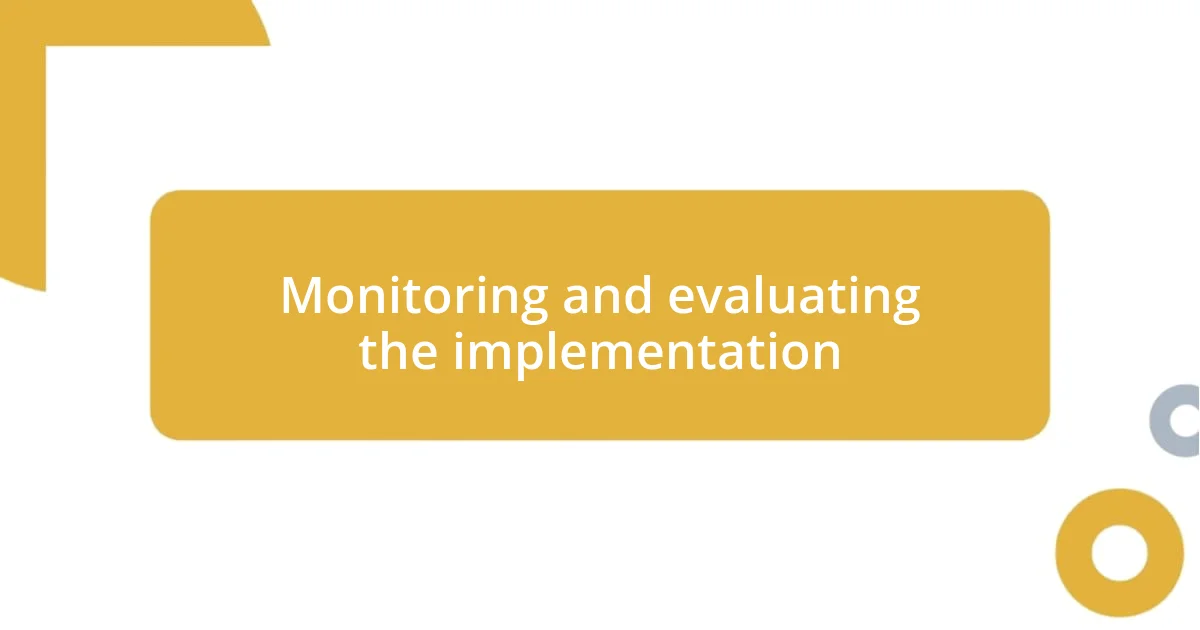
Monitoring and evaluating the implementation
Monitoring the implementation is pivotal to understanding whether our efforts are yielding the desired outcomes. I remember sitting down with my team during our weekly reviews, going over the data we collected. This was more than just number-crunching for us; it became a moment of reflection where we could celebrate progress or identify setbacks. Have you ever noticed how a simple conversation about numbers can unveil deeper issues? For us, those check-ins often revealed underlying patterns that required our immediate attention, helping us fine-tune our processes in real time.
Evaluation doesn’t simply revolve around statistics; it’s about listening to the voices of our team and the people we serve. After introducing new guidelines, I organized anonymous surveys to gather feedback from both staff and patients. The insights were eye-opening, highlighting areas of success and frustration. I could feel the tension ease as we recognized where we were meeting needs and where there was room for improvement. Isn’t it fascinating how feedback, especially when candid, can steer our next steps? This ongoing dialogue became a cornerstone of our approach to continuous betterment.
As I monitored our progress, I found that adapting my strategies to the real-time feedback was crucial. Once, after receiving mixed reactions to a newly implemented process, I facilitated a brainstorming session with the team to discuss adjustments. The lively discussion that unfolded was energizing; it encouraged everyone to share their experiences and suggestions openly. This collaborative environment made us feel united in our mission and helped boost engagement. How often do you consider your team’s insights in your evaluation process? For me, tapping into that collective perspective has proven invaluable for enhancing our practice continuously.
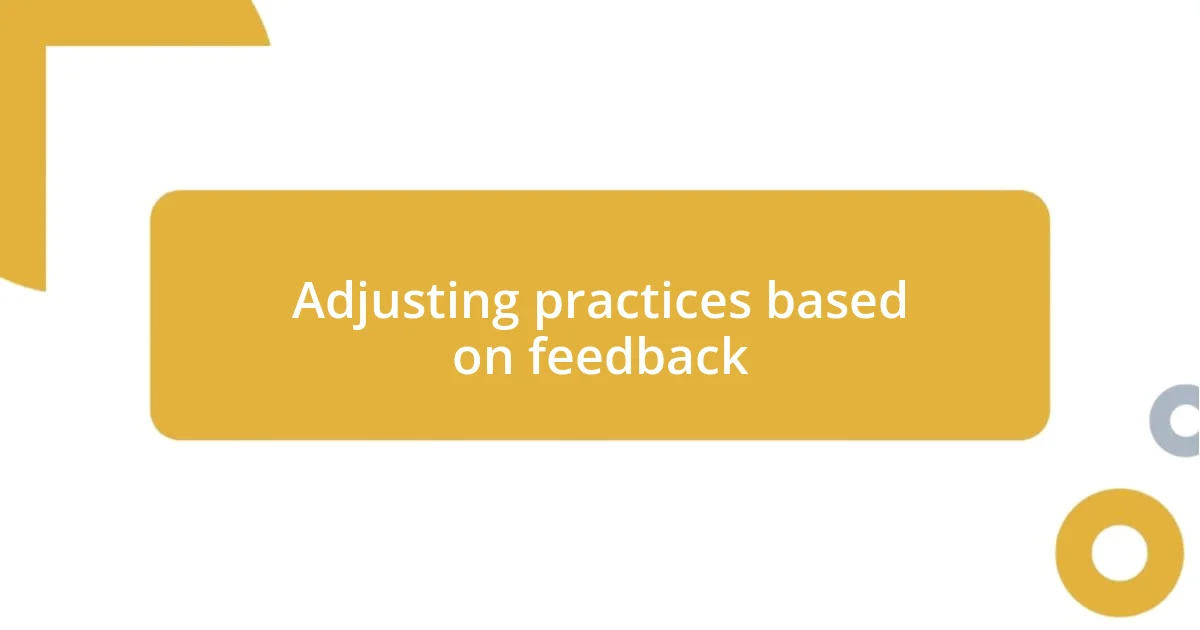
Adjusting practices based on feedback
Adjusting practices based on feedback is an ongoing journey that I’ve come to embrace wholeheartedly. In one of our project cycles, I noticed a dip in enthusiasm from some team members after implementing a new patient engagement protocol. Rather than brushing it aside, I scheduled a candid feedback session. The room buzzed with opinions—some felt overwhelmed, while others had constructive suggestions. I knew then that the key lay in making adjustments based on their insights. Have you ever felt that way, where a simple conversation can illuminate the path forward?
I vividly remember one instance when our patient satisfaction scores dropped unexpectedly. Instead of panicking, I gathered the team to dissect the feedback. There was an air of vulnerability; admitting we didn’t hit the mark was difficult, but necessary. In our brainstorming to rework the outreach strategy, a junior staff member proposed a fresh digital approach that sparked excitement. It was eye-opening for me to realize that tapping into diverse experiences can lead to innovative solutions. How often do you find hidden gems of wisdom in unexpected places?
The beauty of this adjustment process is that it reinforces a culture of openness. I’ve come to appreciate how feedback not only drives enhancements but also fosters trust among my team. Celebrating the implementation of even minor changes can shift the atmosphere entirely. After optimizing our practices, I made it a point to acknowledge individual contributions publicly—each shout-out felt like a small win for us all. It’s incredible how valuing feedback can transform a team’s dynamics. Do you celebrate your team’s milestones? I believe those moments are crucial in maintaining momentum and boosting morale.


